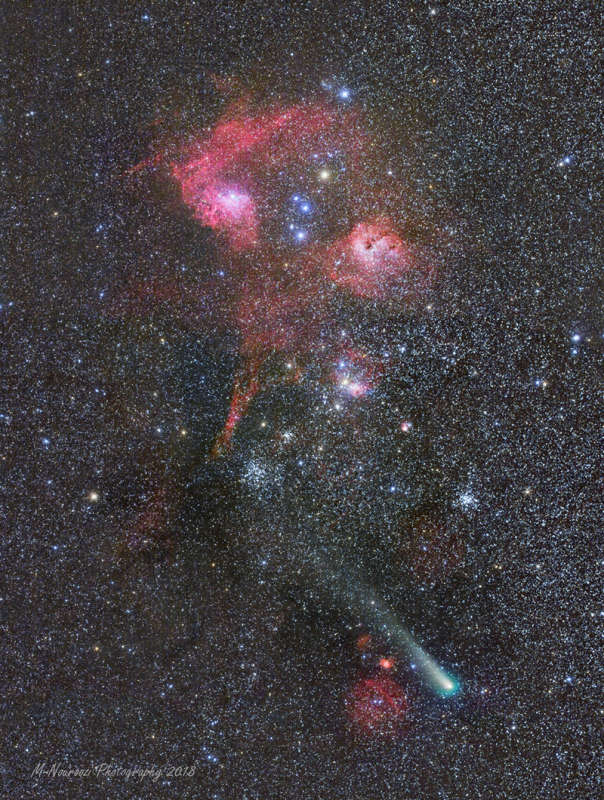
|
Credit & Copyright: Mohammad Nouroozi
Explanation:
Bright enough for binocular viewing
Comet 21P /
Giacobini-Zinner stands out, even in this
deep telephoto
mosaic of the star cluster
and nebula rich constellation Auriga
the Charioteer.
On the night of September 9 its greenish coma and diffuse tail contrast
with the colorful stars and reddish emission nebulae in the
almost 10 degree field of view along the Milky Way.
The comet was near its perihelion and closest approach to Earth,
about 200 light-seconds away.
Riding across the distant background just above the comet's tail
are well-known Auriga star clusters M38 (left of center) and
M36 (toward the right) about 4,000 light-years away.
At the top left, emission region IC 405 is only 1,500 light-years
distant, more dramatically known as the
Flaming Star Nebula.
To its right lies IC 410, 12,000 light-years away and
famous for its star-forming
cosmic tadpoles.
A child of
our
Solar System Giacobini-Zinner is a periodic
comet orbiting the Sun once every 6.5 years, and
the parent body of October's
Draconids meteor shower.
|
January February March April May June July August September October November December |
| ||||||||||||||||||||||||||||||||||||||||||||||||
NASA Web Site Statements, Warnings, and Disclaimers
NASA Official: Jay Norris. Specific rights apply.
A service of: LHEA at NASA / GSFC
& Michigan Tech. U.
Based on Astronomy Picture
Of the Day
Publications with keywords: comet - nebula - star cluster
Publications with words: comet - nebula - star cluster
See also:
- APOD: 2025 December 1 Á 3I ATLAS: Tails of an Interstellar Comet
- APOD: 2025 November 25 Á Comet Lemmon and the Milky Way
- 3I/ATLAS: A View from Planet Earth
- APOD: 2025 November 17 Á Comet Lemmons Wandering Tail
- APOD: 2025 September 30 Á Comet Lemmon Brightens
- APOD: 2025 September 29 Á Two Camera Comets in One Sky
- APOD: 2025 September 26 Á A SWAN an ATLAS and Mars
